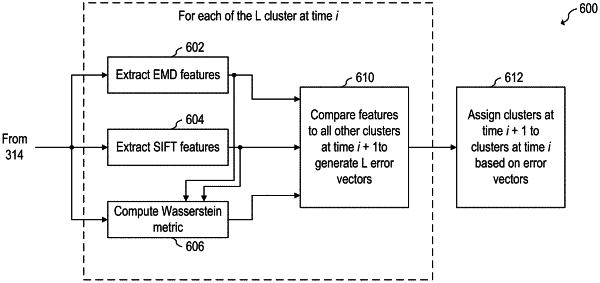| CPC G01S 13/726 (2013.01) [G01S 7/411 (2013.01); G01S 7/415 (2013.01); G01S 7/417 (2013.01); G01S 13/584 (2013.01)] | 21 Claims |

|
1. A method for tracking targets, the method comprising:
receiving reflected radar signals from a radar sensor of a radar;
generating received reflected radar data from the received reflected radar signals;
processing the received reflected radar data to detect targets;
identifying a first geometric feature of a first detected target at a first time step, the first detected target being associated to a first track;
identifying a second geometric feature of a second detected target at a second time step;
determining an error value based on the first and second geometric features; and
associating the second detected target to the first track based on the error value, wherein
identifying the first geometric feature and identifying the second geometric feature comprises performing a first empirical mode decomposition (EMD) on data associated with the first detected target based on the processed received reflected radar data, identifying first intrinsic mode functions (IMF's) from the first EMD that are higher than a first predetermined threshold, and performing a second EMD on data associated with the second detected target based on the processed received reflected radar data, or
identifying the first geometric feature and identifying the second geometric feature comprises performing a first invariant feature transform (SIFT) feature extraction on a first radar image associated with the first time step based on the received reflected radar data to extract first magnitude or first phase associated with the first detected target, and performing a second SIFT feature extraction on a second radar image associated with the second time step based on the received reflected radar data to extract second magnitude or second phase associated with the second detected target.
|